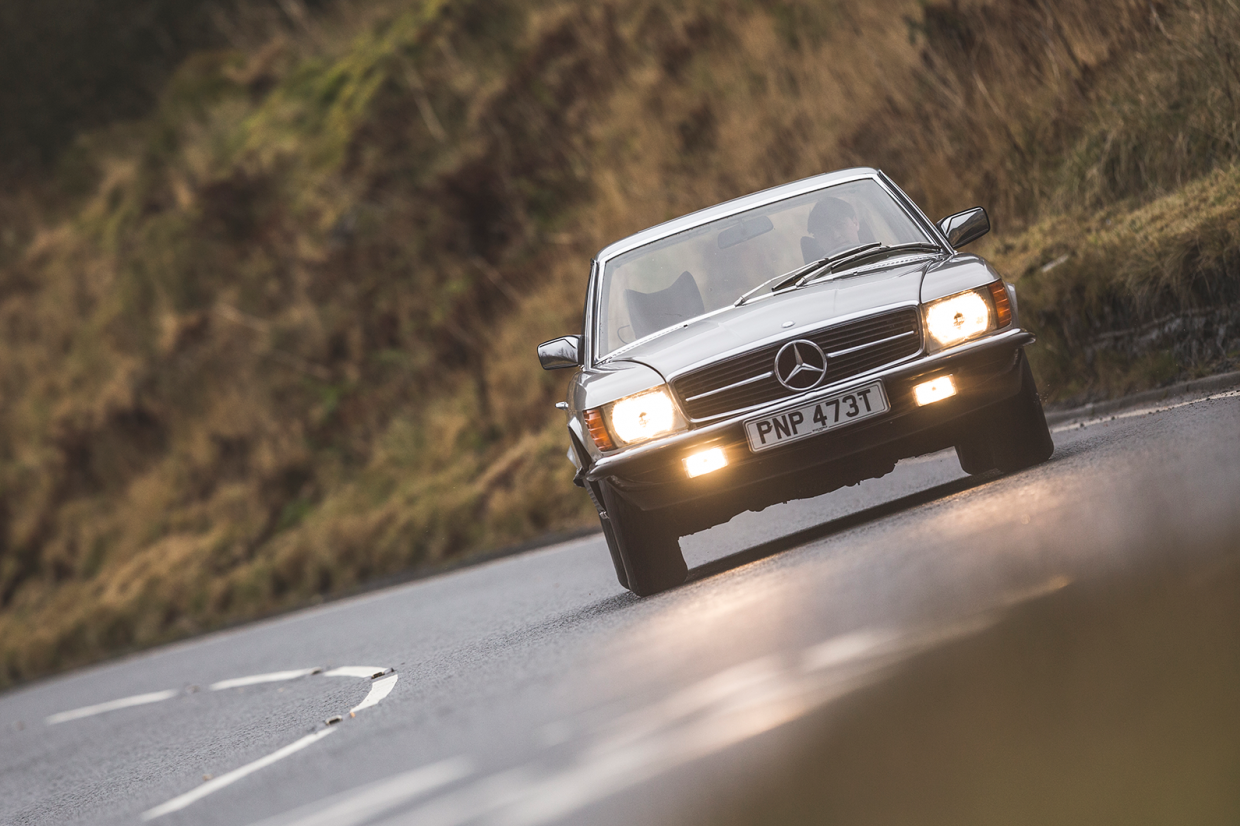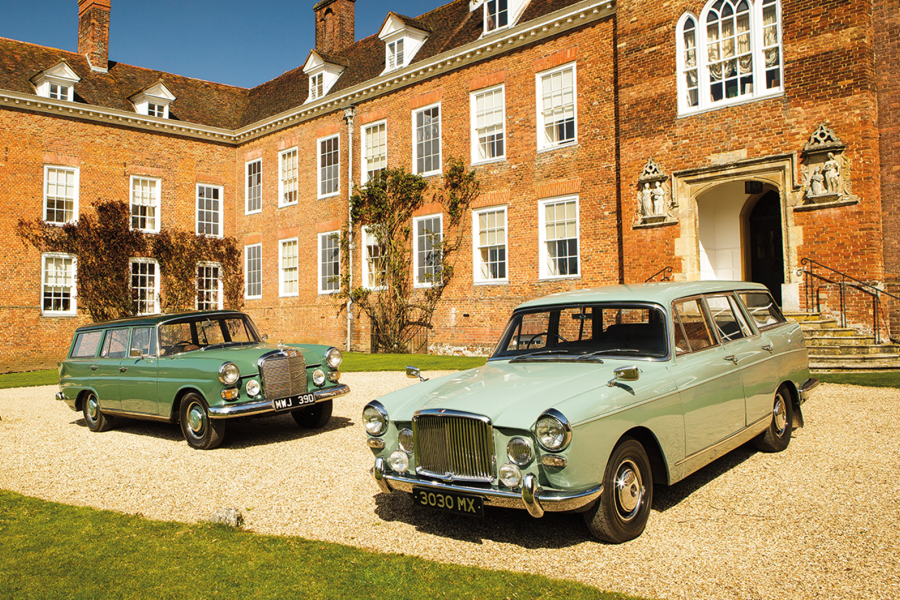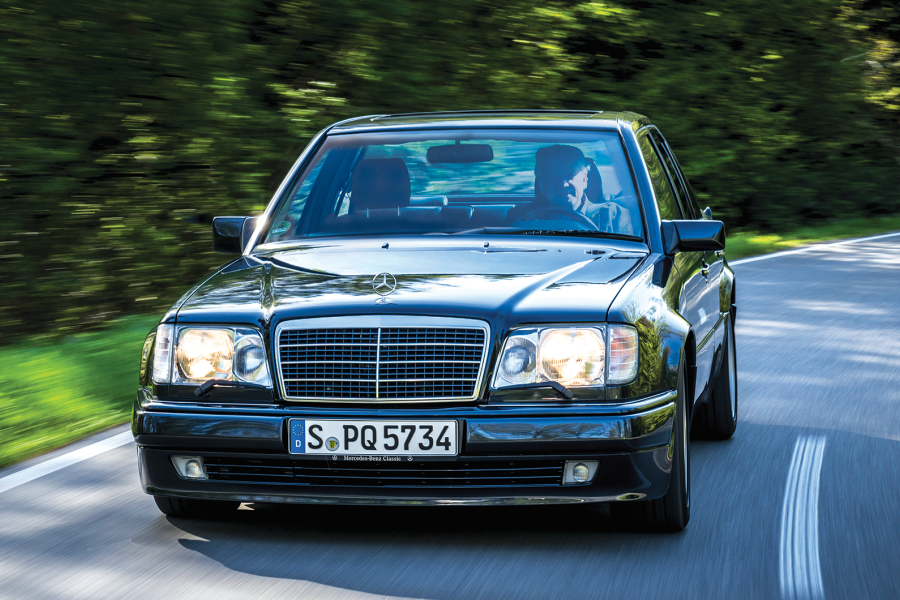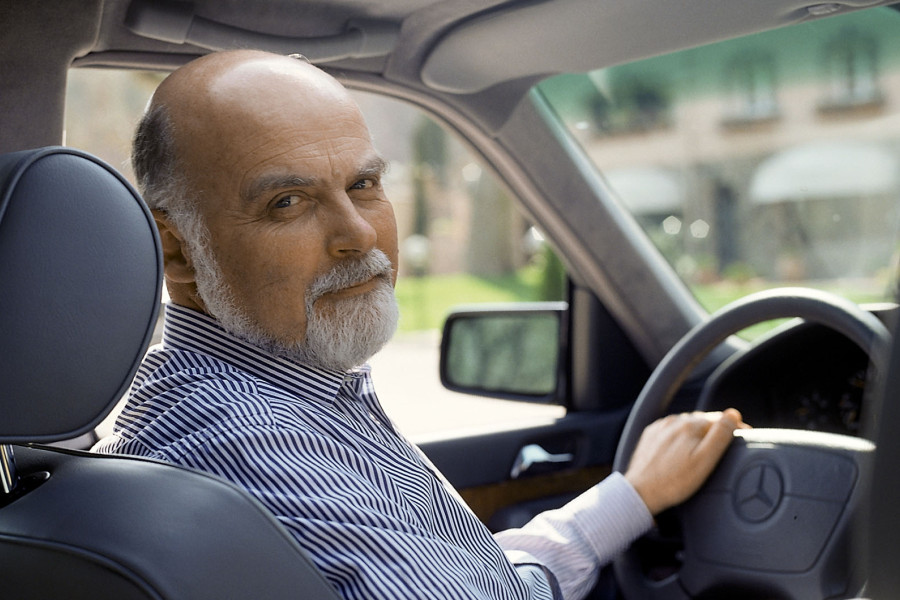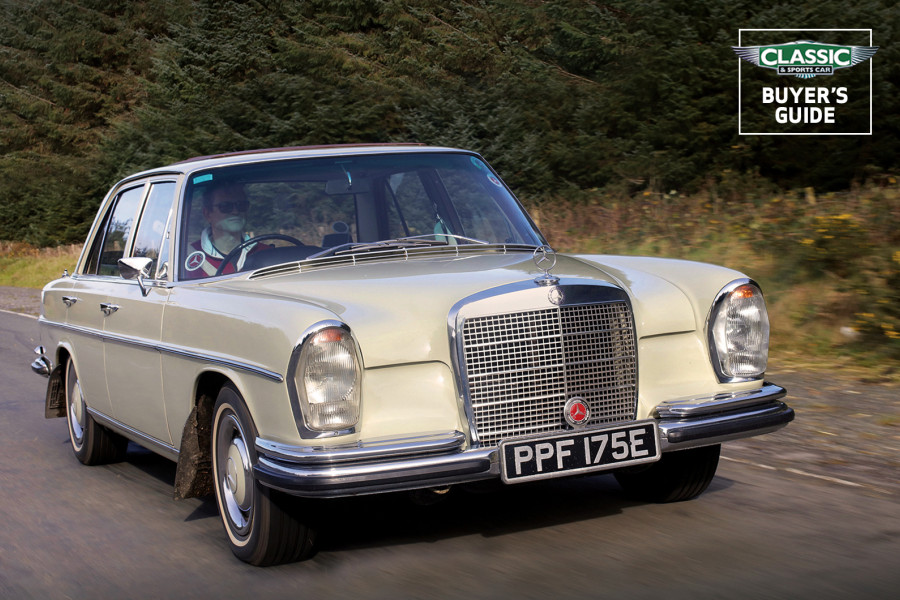Not long ago I remember talking to a car cleaner who worked for an Audi dealership and managed to nab his 5-litre SLC for a song after it was chopped in against a modern blob.
Paul Deacon has owned his 450SLC 5.0 for two decades. He feels guilty he has not used the silver coupé as much as he should have, with racing pedal bikes having become an all-consuming passion in the intervening years.
The big SLC wasn’t as nimble as its rivals
“The attraction of the 5-litre stemmed from a childhood encounter with the Mercedes-Benz in-house magazine in aller Welt, which had a piece on the 5.0 showing all the aluminium parts,” says Deacon, whose car came into the country from Germany with 99,000km in 1999.
He bought it from Michael Lavers at Silver Arrows a year later: “It’s my second SLC, because I was running a standard 450 at the time as a company car. With that you had to use the gearlever to row it along, but the 5-litre has more torque. It handles much better than an SL.”
It looks better, too. The shape gets prettier as the years pass, and Mercedes was correct in not besmirching its elegant profile with boy-racer addenda for this special edition.
That said, with its very ’70s green velour, massive wheel and token veneer trim, the ‘lightweight’ interior has none of the testosterone-fuelled sense of occasion you get upon stepping inside a CSL.
The huge steering wheel and corduroy trim give a ’70s flavour
On the road the SLC is quiet, capable and comfortable. Its fat seats are more embracing than they look, all-round vision is superb and you can drive it quickly at once.
It is probably faster than many more exotic contemporary machines that make a lot more fuss; press the firmly damped throttle and you merely swoop forward on silken elastic with a distant mumble of fuel-injected V8 throatiness that is never truly exciting but sounds satisfyingly efficient.
Turn that big wheel and you know right away that there is sufficient feel to inspire confidence in placing the SLC accurately without it being twitchy, although ultimate grip is moderate by current standards.
Had Mercedes homologated a really good manual ’box for this car, I suspect it would be a more valuable prize today.
You don’t see a 5.0 too often, especially here in the UK
As it is, the auto is about as good as it got in the late ’70s, with a certain crispness of response that tends to suggest it is not squandering huge amounts of power, and a willingness to be overridden that keeps progress interesting.
The brakes you don’t think about (which means they must be good), and if the taut ride doesn’t feel as expensive as you think it should that’s probably more down to road noise than a lack of resilience.
Given the rose-tinted mist that descends whenever talk turns to homologation specials, I have always been surprised at how reasonably priced these 5.0s are.
This is, I think, partly because people get understandably confused by Mercedes model numbers, and the SLC adds to the problem because of its visual kinship with the much more numerous and long-lived R107 SL.
Its clean, slim-pillared shape is acquiring grace with age
Then again, SLCs are not exactly rare, with 66,000 built, and even 5-litres are conspicuously numerous.
Perhaps the 5.0 turned the usual ‘homologation special’ story on its head by being more a tale of commercial success than on-track glory.
Only Mercedes could produce a low-volume, motorsport-inspired special so seamless and sensible that it was no more or less exciting, really, than the car on which it was based.
Images: Luc Lacey/Daimler AG
Factfile
Mercedes-Benz 450SLC 5.0
- Sold/number built 1977-’80/1636
- Construction steel unitary, with aluminium bonnet, doors and bootlid
- Engine all-alloy, sohc-per-bank 5025cc V8, Bosch fuel injection
- Max power 240bhp @ 5000rpm
- Max torque 278Ib ft @ 3200rpm
- Transmission three-speed automatic, RWD
- Suspension independent, at front by double wishbones rear semi-trailing arms; coil springs, telescopic dampers, anti-roll bar f/r
- Steering power-assisted recirculating ball
- Brakes discs, with servo and anti-lock
- Length 15ft 6½in (4740mm)
- Width 5ft 10in (1778mm)
- Height 4ft 3¼in (1300mm)
- Wheelbase 9ft 3in (2820mm)
- Weight 3340Ib (1515kg)
- Mpg 15
- 0-60mph 8.5 secs
- Top speed 140mph
- Price new DM62,272 (1978)
- Price now £35,000*
*Price correct at date of original publication
READ MORE
Putting Munich on the map: BMW 2002 and 3.0 CSL
RIP Hannu Mikkola 1942-2021
Mercedes-Benz W123: some things were built to last
Martin Buckley
Senior Contributor, Classic & Sports Car
